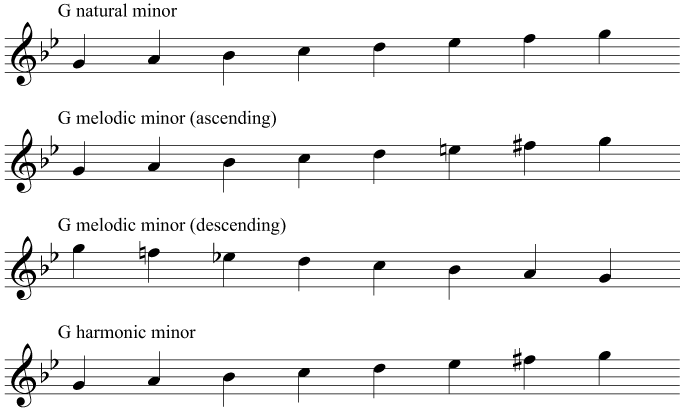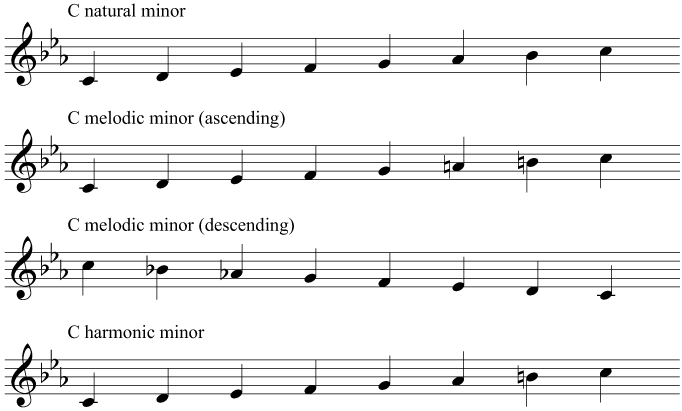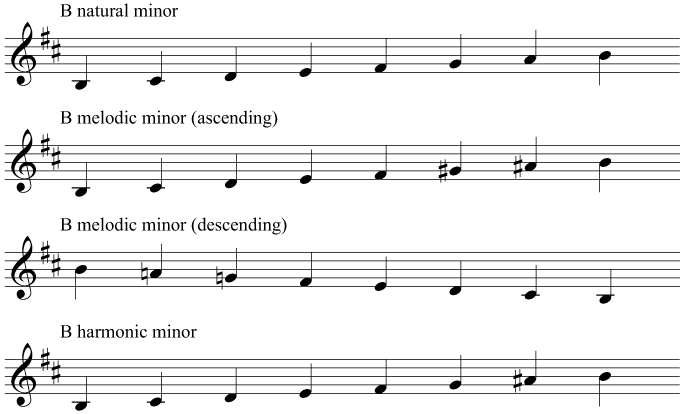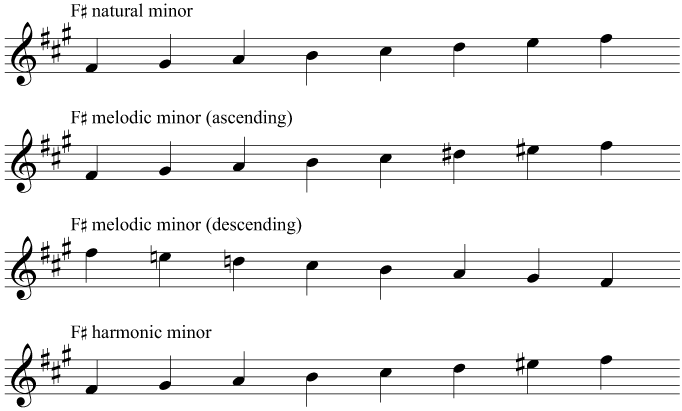Keys level 2
In this guide...
Key terms:
Subscription required!
To view the complete study guide, you will need a valid subscription. Why not subscribe now?
Already have a subscription? Make sure you login first!
Introduction
Let's introduce a few more major scales along with several minor scales: everything with up to three sharps or flats.
A reminder: The major scale
We have looked at the concept of the major scale in the previous study guide, so here is a quick reminder.
The important aspect of this scale is the pattern of semitones and tones that form the intervals between the notes. This pattern is unique to the major scale, and allows us to form a major scale starting on any note, simply by following this pattern:
T-T-S-T-T-T-S
Some more major scales
Let's apply this pattern to create major scales and therefore keys beginning on A, B flat, and E flat.
A major
 Creating the scale of A major
Creating the scale of A majorThe key signature of A major therefore has three sharps, and the scale can be rewritten like this:
 The A major scale and key signature
The A major scale and key signatureKey signatures
Given that the key signature for A major has three sharps, it's worth reminding ourselves of the rules for creating the key signatures:
- Add new sharps (or flats) to the right of previous sharps (or flats)
(So in A major, we add the new sharp - G sharp - to the right of the two sharps from D major) - Put the sharp (or flat) in the highest available line (flats) or space (sharps), without going out of the stave
- The sharps (or flats) must rise and fall in sequence, unless doing so would cause the sharp/flat to go out of the stave
(So, if a sharp or flat is above the one before, the next sharp must go below)
This rule is the same for all other key signatures, in all clefs, so it's worth remembering! Here are the first three key signatures that use sharps, side by side, so you can see this process, in both treble and bass clefs:
 Key signatures up to three sharps
Key signatures up to three sharpsB flat major
We don't only have to start on a natural note when we create a major scale. Let's try starting on B flat:
 Creating the scale of B flat major
Creating the scale of B flat majorThis is the scale of B flat major. We can use those two flats in the key signature, and rewrite the scale like this:
 The B flat major scale and key signature
The B flat major scale and key signatureE flat major
Just as with B flat major, let's try starting on E flat to produce E flat major:
 Creating the scale of E flat major
Creating the scale of E flat majorAnd here is the same scale with the key signature:
 The E flat major scale and key signature
The E flat major scale and key signatureIn the bass clef
Here are these three key signatures, this time written in the bass clef.
 Key signatures up to three flats, in the bass clef
Key signatures up to three flats, in the bass clefRecall the third rule about placement of sharps/flats in the key signature:
- The sharps (or flats) must rise and fall in sequence, unless doing so would cause the sharp/flat to go out of the stave
For this reason, the A flat in the key signature with three flats is in the bottom space and not on the top line!
Another reminder: the minor scale
In addition to these major keys, there are also minor keys with the same key signatures. Recall that there are three variations to the minor scale:
- The natural minor: the notes obey the key signature
- The melodic minor: raised 6th and 7th degrees on the way up only
- The harmonic minor: raised 7th degree on the way up and the way down
G minor
The minor scale forms (natural, harmonic, melodic ascending, melodic descending) of G minor are as follows:
 The scales and key signature of G minor
The scales and key signature of G minorThe key signature for G minor is just the same as for B flat major, which is the relative major of G minor.
C minor
Here is C minor, with three flats in the key signature and therefore the relative minor of E flat major:
 The scales and key signature of C minor
The scales and key signature of C minorB minor
The corresponding picture for sharp key signatures provides us with B minor, which shares two sharps with D major:
 The scales and key signature of B minor
The scales and key signature of B minorF sharp minor
And finally, with three sharps and sharing a key signature with A major, we have F sharp minor:
 The scales and key signature of F sharp minor
The scales and key signature of F sharp minorF sharp minor can sometimes feel confusing or difficult because of the unfamiliar E sharp accidental - but if you remember that it is just the same pattern as any other minor key, you will be safe!
Read more...
With a subscription to Clements Theory you'll be able to read this and dozens of other study guides, along with thousands of practice questions and more! Why not subscribe now?
Revision
Are you sure you've understood everything in this study guide? Why not try the following practice questions, just to be sure!